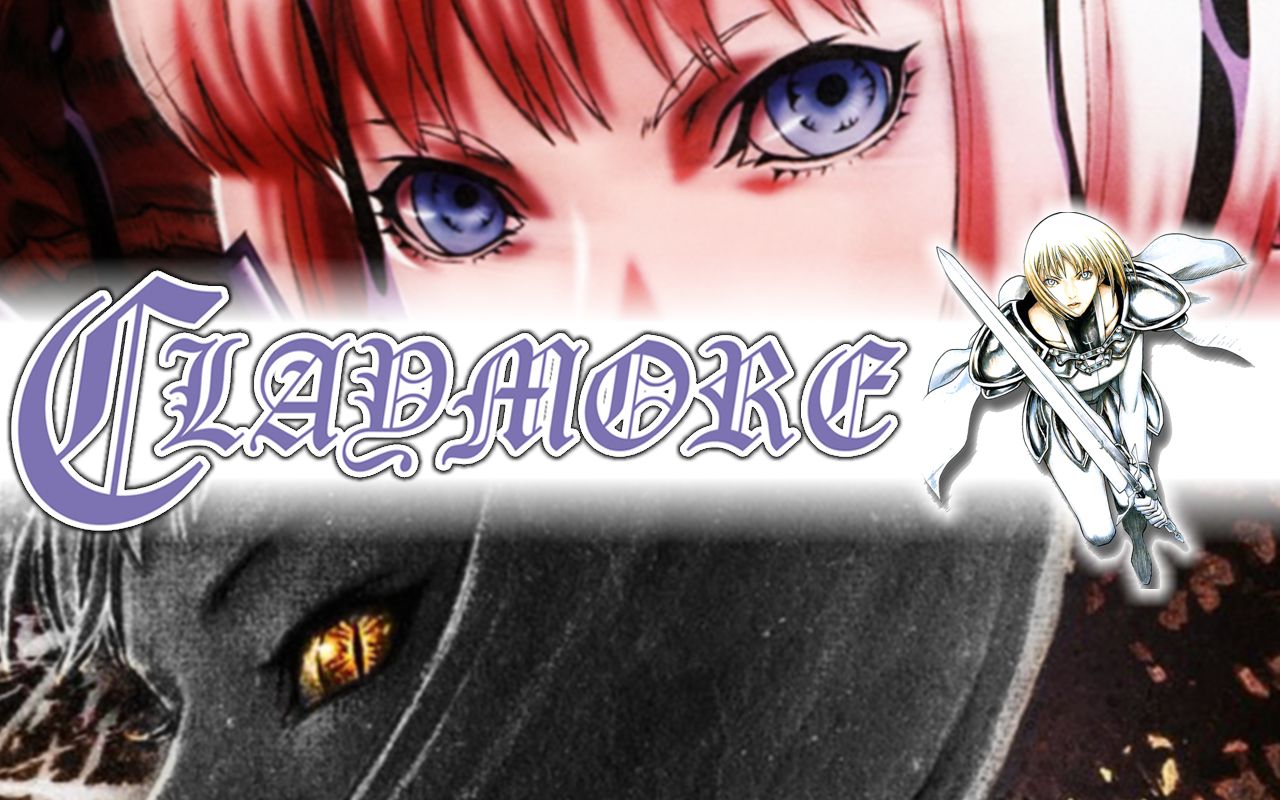
Claymore is a dark fantasy anime series based on Norihiro Yagi's manga of the same name. While the manga officially concluded in December 2014, the anime series, directed by Hiroyuki Tanaka, finished airing in 2007. Over twenty-six episodes, the anime follows the general plot of the first eleven volumes of the manga. However, due to the fact that the manga was ongoing at the time, the ending of the anime differs significantly from the original source material.
The Setting
The series is set in a fictionalized world resembling medieval Europe, where humans are plagued by Yoma, monsters that disguise themselves as humans in order to eat human flesh. The Organization exists to combat the threat of Yoma on the island. It creates half-human, half-Yoma hybrids known as Claymores, or Silver-Eyed Witches. Currently, Claymores are all female warriors, since the male warriors that the Organization had created in the past all became Awakened Beings, or super-powered Yoma. The act of awakening is similar to sexual climax, so the male Claymores too easily succumbed to the pleasure. Thus, only females are made into Claymores now.
The island is divided into 47 districts, with each district being assigned one Claymore. There are usually 47 Claymores at one time, ranked in order of power from 1 to 47—1 being the strongest, 47 being the weakest. Claymores can be promoted or demoted at will by the Organization, which artificially creates the warriors by implanting the flesh and blood of a Yoma inside the bodies of young girls. Often, the girls are orphans whose families were killed and eaten by Yoma. The only known exception to the half-human, half-Yoma warrior is Clare, the protagonist of the series, who had the flesh and blood of another Claymore implanted inside of her instead.
Claymores have the appearance of "Silver-Eyed Witches" because the process of becoming a Claymore gives them silver eyes and pale white-blond hair. They also gain the ability to release yoki, or demon energy, which gives them enhanced physical strength, speed, endurance, and regeneration. When Claymores release yoki, their eyes turn golden and catlike. Unfortunately, releasing too much yoki can cause a Claymore to awaken, since the demon energy overpowers their human mind.

Many Claymores develop their own unique sword techniques and yoki manipulation abilities, especially amongst the top-ranked warriors. Although they live and die in service to the Organization, there is great variation amongst the Claymores in terms of personality, motivations, and of course, strength. The number one rule of a Claymore is that they are not allowed to kill humans for any reason, since their sole purpose is to protect the humans from Yoma.
The setting of Claymore is fascinating because it has close ties to medieval Europe, but contains key differences as well. One of the biggest references to medieval times in the series is the holy city of Rabona, which contains a magnificent cathedral resembling the historical Chartres Cathedral, a paragon of the Gothic architecture of medieval France.


The humans of Claymore also look and dress like their counterparts in the past.


Further connections with medieval times can be seen in the title of the series. The warriors called Claymores all wield claymores, which is a type of medieval two-handed longsword.


The word "claymore" actually comes from the Gaelic word claidheamh-mòr, which means "great sword". It was used by the Scottish Highland warriors during constant border skirmishes with the English during the Middle Ages. In the modern day, this sword has become famous as a symbol of the dangers of European life only a few centuries ago, when such massive swords were wielded to protect nations, homes, and cultures. Thus, the use of claymores in the anime series serves as another reference to the dark medieval period, where death was common, and could come from anywhere.
Back then, the Black Death, or the bubonic plague, was a truly terrifying epidemic. You could never be sure where the next outbreak would occur—your own loved ones might be the cause of your infection and eventual death. In Claymore, the threat of the Yoma epitomizes this terrible anxiety. Unseen, undetectable monsters that hunger for human flesh—the Yoma truly represent the deepest fears of human beings.
The most horrifying thing about the Yoma is that they disguise themselves as humans, so they can eat human flesh without being detected. Your own mother, father, brother, or sister could be a Yoma, and you wouldn't know until the last moment. Such a discovery is obviously very traumatizing, and in fact, played a significant role in the mental instability of Priscilla, the main antagonist of the series. As a young girl, she was forced to kill her own father after his body had been taken over by a Yoma; she was unable to save the rest of her family. This traumatic event laid the foundation for her future evil actions, after she becomes an Awakened Being herself, and has its roots in the dark and paranoid world of the Middle Ages.
Back then, the poor were easily stricken by disease, such as the bubonic plague, and were helpless to stop it—unlike in the modern world, where we have medicine and science to combat illness in a more systematic way. The harsh reality of life in medieval Europe is reflected in the fictional detail of the Organization's greediness. It charges exorbitant fees to send Claymores to eradicate Yoma, which many villages cannot afford to pay. Much like in medieval times, the poor of Claymore often must face the prospect of a gruesome death without any outside assistance.
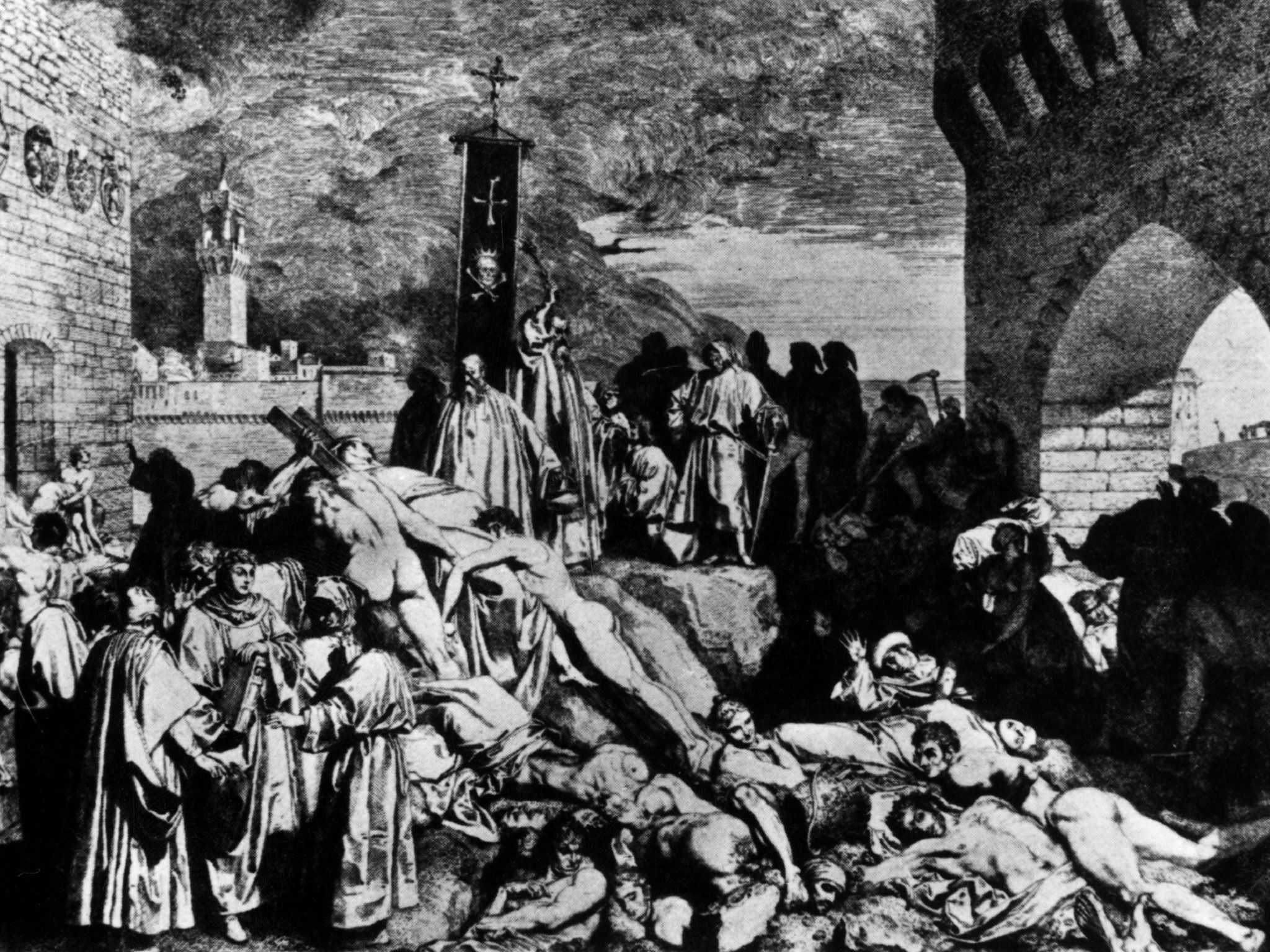
The eponymous half-human, half-Yoma warriors of the series also have their basis in medieval superstitions. Known as "Silver-Eyed Witches", they are viewed with suspicion and fear by most humans, which parallels medieval notions of the supernatural. In the Middle Ages, the persecution of witchcraft was a widespread phenomenon, since magic, particularly black magic, was associated with the devil. Most of those accused of being a witch were women, and they were indiscriminately hanged or burned at the stake.
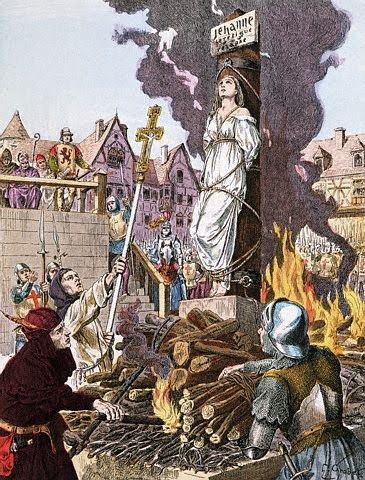
In the world of Claymore, however, the "Silver-Eyed Witches" are significantly more powerful than even the most highly trained soldiers. Thus, not only are humans unable to hunt and persecute them, but they are actually forced to rely on the "Silver-Eyed Witches" for help. In fact, in an intriguing reversal of their traditional role, the Claymores actually detect the Yoma by sensing their yoki; they reveal the monsters in the humans' midst, then they execute them. This sequence of events is much more black-and-white in the series than it was in history. In the series, the Claymores are the hunters, not the hunted, and the Yoma are indefensible monsters that deserve to die. In actuality though, innocent people were often accused of witchcraft, and murdered, during the anarchic witch-hunts of the Middle Ages. The series provides a distinctly supernatural twist on historic events, but simplifies the situation in order to focus on the plot and individual warriors' character development.
What's In a Name?
Clare, Jean, Teresa, Ophelia, Miria—not only are the names of these warriors very beautiful, but they also point to the characters' most essential qualities. Clare's name means "clear", "light", "shining", "bright"—indicating the light she spreads to her friends' lives, as well as the clarity of her life's goal.
Jean's name recalls the saint Jeanne d'Arc, or Joan of Arc, who saw visions of saints urging her to fight for France in the war against England. Joan of Arc successfully led a French army to a crucial victory at Orléans on May 8th, 1489. Later, after being captured by the Burgundians, who were allied with the English, she was accused of witchcraft and burned at the stake. To this day, she is still considered a patron saint of France.

Teresa's name brings to mind the five Roman Catholic saints bearing that name:
1) Teresa of Ávila:
A Spanish nun who worked tirelessly to reform the Carmelite Order, of which she was a part. She founded many convents in order to renew what she considered to be the basics of her faith—a contemplative life of absolute poverty, devoted to quiet prayer. Along with John of the Cross, she founded the Order of Discalced Carmelites.

2) Teresa Margaret of the Sacred Heart:
An Italian Discalced Carmelite nun. Despite her short time in the cloister—for she died at a young age—she was able to develop profound mystical gifts and a pious devotion to prayer. After her death, her body supposedly returned to the beauty and vitality it had retained in life. To this day, her incorrupt body rests, perfectly preserved, in the Discalced Carmelite Monastery in Florence.
3) Saint Thérèse of Lisieux:
Also known as Saint Thérèse of the Child Jesus and the Holy Face, or "The Little Flower of Jesus", she was a French Discalced Carmelite nun. She is an extremely popular saint to this day, due to her influential belief that great deeds are not necessary to be truly holy. One of her fellow nuns deemed her practice "the little way of spiritual childhood." Saint Thérèse also wrote a spiritual memoir titled L'histoire d'une âme, or The Story of a Soul, which continues to inspire Catholics all over the world.

4) Teresa of Los Andes:
A Chilean Discalced Carmelite nun. Although she died young, at age nineteen, she lived a holy life and serves as a model of spirituality for young people today. She was the first Chilean to be beatified or canonized.
5) Teresa Benedicta of the Cross:
Born Edith Stein, she was a German Jew who later became a Discalced Carmelite nun. She was a teacher and philosopher who approached her faith in a scholarly way. Unfortunately, living in the Netherlands during the time of the Nazi occupation, even her piety could not save her. She was arrested and imprisoned in the Auschwitz concentration camp in 1942, where she died in the gas chamber.

Another venerated Roman Catholic figure, Mother Teresa of Calcutta, has not yet been canonized, or officially recognized as a saint. Nevertheless, she is immensely popular around the world, and received the 1979 Nobel Peace Prize. Born in Macedonia, she did most of her charity and missionary work in India, and is famous for her tireless efforts on behalf of "the poorest of the poor."
Ophelia's name may be a reference to the mad Ophelia of Shakespeare's play Hamlet. In Greek, the meaning of the name Ophelia is either "help" or "serpentine", which relates to Ophelia's Rippling Sword technique, in which she moves her arm so fast that her sword looks like a snake undulating in the air.
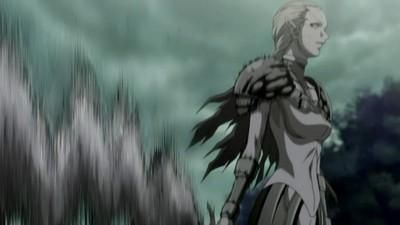
Miria's name comes from the Hebrew name Miriam, which means "rebellion". Truly an apt name for a warrior who wishes to rebel against the Organization.
Why You Should Watch Claymore
As you can see, there is a lot of meaning behind both the settings and the characters of Claymore, which are all well-conceived and distinctive. In their world, even if they are "Silver-Eyed Witches" who are feared by the very people they are sworn to protect, at least they can find kinship with their comrades-in-arms.
Unfortunately, the warriors are at constant risk of awakening and becoming the very monsters they so despise. When a warrior feels that she is on the brink of awakening, she can send a Black Card to one of her fellow warriors, usually a trusted friend. At the rendezvous point, the recipient of the Black Card will end the life of the sender, allowing her to die in peace, with her humanity still intact. Although this system might seem cruel and ruthless, it is actually meant to preserve the dignity of those warriors who have reached their limit, but still have the resolve to die an honorable death.

This system also exemplifies one of the best aspects of Claymore—its complex morality. Although the Yoma are seen as categorically evil, the Claymores and the Awakened Beings are not so easily labeled. Every character has his or her own sense of morality, which is constantly shifting, and even so-called evil characters like Ophelia are viewed with compassion instead of judgment. Riful, who has no issues with torturing Claymores to the point of awakening, is still capable of love for her consort Dauf, despite his unintelligence. Teresa is supremely cold in battle, and will slaughter Yoma and humans alike, but she has a soft spot for Clare and will do anything to protect her. There are many shades of grey throughout the series, which makes it more interesting than if there were only good guys and bad guys, and no in between.
It's also interesting that an action-filled fighting series contains a mostly female cast of characters. The women of Claymore are not only stronger than any human man, due to their enhanced abilities as half-Yoma warriors, but they are also rarely interested in any kind of romantic entanglements. Instead, their concerns are about vengeance, retaining their humanity, the purpose of life as a tool, and other more serious matters. The platonic friendships between the warriors are what motivate them to keep fighting, so that they can honor those who have lent them their strength, while also protecting those who might be weaker.

Claymore develops all of its characters with great complexity and compassion. The most important relationship in the series is between Clare and Teresa, who share an almost maternal bond between them. The relationship between Clare and Raki is also extremely important. Some people might say that Raki is an annoying character because he is useless in a fight, and the only purpose he serves is to get in the way, and hold Clare back from her true potential. However, his strong relationship with Clare actually proves vital in many moments throughout the series, and cannot be discounted.
In fact, relationships are the driving force behind the entire plot of the series. Clare's relationship with Teresa provides her motivation to kill Priscilla, while her relationship with Raki gives her incentive to hold on to her humanity. Miria is so motivated to reveal the shady dealings of the Organization because of the injustice of her friend Hilda's awakening, and subsequent death at Miria's hands. Ilena helps train Clare because she envied her close relationship with Teresa, and she wants to honor Teresa's memory.
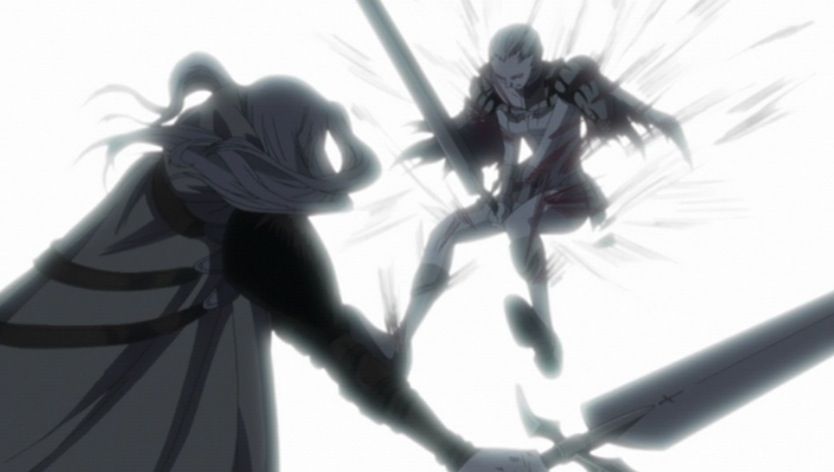
Truly, the characters of Claymore are the best part of the series. The battle scenes are obviously a big draw, and they are very entertaining for their goriness and unpredictability. However, without the stellar character development, the action scenes wouldn't be nearly so powerful. The stakes are high in each battle because we have gotten to know the characters involved, and deeply wish for them to survive. Also, when characters die in Claymore, they stay dead. In many other action series, characters often come back to life or miraculously escape death somehow.
Not in Claymore—the dark and bloody setting means that anyone could die at any time, and in very gruesome ways. While fighting Ophelia, Clare loses multiple limbs, and is only able to escape defeat because Ilena cuts off her only remaining arm as a gift, to replace Clare's severed sword arm. Such brutal, almost casual, violence is common throughout the series, so if you like that kind of thing, you'll enjoy Claymore.
If you're a fan of dark fantasy settings in anime, if you appreciate well-written, fully-developed female characters, and if you enjoy supernatural violence and entertaining battles—you should consider watching Claymore. The only caveat is that the ending of the anime does diverge from the manga, so you might also be interested in reading the manga for a more fleshed-out chronology of events.
Similar Anime Titles
The following dark fantasy anime series also contain gruesome violence, bleak settings, and supernatural fighting and characters:
Berserk
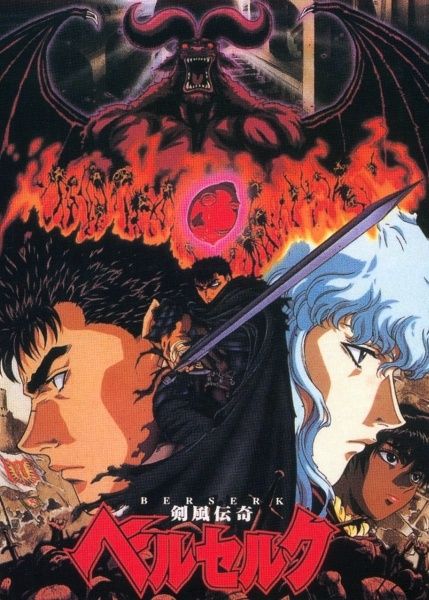
Much like Claymore, Berserk is a dark fantasy anime set in a world inspired by medieval Europe. It is infamous for its extremely gory violence and philosophical nature, exploring both the dark and light sides of humanity. Both series have amazing sword fights, demons, and motivations of revenge. Be warned: Berserk is even bloodier than Claymore. Only recommended for those who are not squeamish!
Synopsis:
In a medieval world of never-ending war, a fearsome swordsman named Guts joins the fighting under the banner of the Band of the Hawk, a mercenary group led by the charismatic Griffith. As the Hawks stamp their names into the history books of Midland, achieving victory after victory on the battlefield, friction begins to develop between Griffith and Guts. Whose heroic dream will prevail?
Blood+
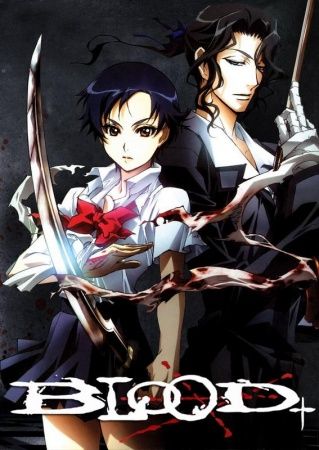
Blood+ is an anime series based (very loosely) on the animated film Blood: The Last Vampire. It is widely considered to be superior to the film in almost every way. Similar to Claymore, the protagonist is a girl with special abilities who must fight to defeat a supernatural threat—monsters that can disguise themselves as humans, to better feed on them. In both series, a mysterious organization acts behind the scenes.
Synopsis:
Otonashi Saya is an ordinary, albeit amnesiac, schoolgirl. Although she cannot remember her past life, she is happy to enjoy the peaceful present with her adoptive family in Okinawa. All of that changes when is she viciously attacked by a Chiropteran, a bat-like creature that consumes human blood for sustenance. Chiropterans can even change their appearances to resemble human beings. Now, Saya must embark on a perilous journey to recover her memories and eradicate this age-old threat. Luckily, she can enlist the help of the Red Shield, which is an organization dedicated to killing Chiropterans.
Attack on Titan

Attack on Titan, also known as Shingeki no Kyojin, is an anime series that, much like Claymore, pits humankind against monsters with the desire to eat human flesh. Although set in the distant future, it bears certain similarities to the medieval world, notably in the siege mentality that the humans have against the Titans. The series is also influenced by European, and especially Germanic, architecture.
Synopsis:
In a world dominated by fear, mankind now hides away in cities fortified by enormous walls, designed to keep the monstrous Titans out. The walls were erected after the Titans attacked, and nearly wiped out, the entire human race. For one hundred years now, the walls have functioned as they should, and there has not been a single attack. However, the peace is soon shattered. The Titans breach the walls. Mankind must fight again.
Eren Yeager is one of the new military recruits, motivated to seek vengeance against the Titans after the creatures attack, and eat, his mother. He and the other soldiers must find a way to defeat the threat of the Titans before the final defenses of humanity are breached.
Fate/stay night

Fate/stay night is an anime series that allies a strong female warrior with a (physically) weaker male character, in the same way that Clare grows close to Raki in Claymore. Although set in modern-day Japan, the series contains many magical and fantasy elements. Also, the characters' quest to obtain the Holy Grail is inspired by the medieval-era mythology of King Arthur's Britain.
Synopsis:
Shirou Emiya is a budding magus and schoolboy in Fuyuki City. One night, he stumbles upon the scene of a terrifying battle at his school. As an accidental witness to the Fifth Holy Grail War, which pits magi against each other in a tournament of duels to the death, Emiya is attacked, and nearly killed. Suddenly, a beautiful warrior named Saber emerges to save his life. Now, the inexperienced Emiya, with Saber as his Servant, must battle just to stay alive, as he faces off against the other teams of magi—all to survive, and win the prize of the Holy Grail!
Elfen Lied

Elfen Lied, much like Claymore, is an anime series dedicated to the fine line between humanity and monstrosity. It raises provocative questions on whether nature or nurture is the main cause of evil. Vengeance is a major theme throughout the series. Unlike the undisputed relationship between Yoma and human beings in Claymore, or even between Claymores and Awakened Beings, the Diclonius' motivations are much more complex, and not necessarily more evil than those of humans.
Synopsis:
The Diclonius, a mutated species who appear otherwise similar to humans, have horns on their heads, in addition to telekinetic powers. The series begins when Lucy, a Diclonius test subject, escapes from the scientific containment facility where she was being held. In the process of escaping, she brutally murders many security guards, and anyone else in her way. After a sniper manages to shoot her in the head, she falls into the ocean, eventually drifting to a beach where two teenagers, Kouta and Yuka, discover her. Having lost her memories, Lucy has regressed into a childlike state, and the only word she can say is "Nyu." However, not everything is as it appears…
Hellsing

Hellsing is another dark fantasy anime series about a group of specialty warriors, employed by a mysterious organization specifically to combat the threat of supernatural monsters—especially vampires. The protagonist, Alucard, is actually a vampire himself, but views the vampires he hunts with disgust and disdain, similar to how Claymores view Awakened Beings. Hellsing's setting in London, England is crucial to its storyline and atmosphere, particularly in regards to its Christian symbolism.
Synopsis:
The British government employs the secret Hellsing Organization to defend humans from the supernatural creatures that threaten them. Its most deadly member is Alucard, who is actually a powerful and ancient vampire himself. Alucard works with a newly-turned vampire named Seras Victoria. Together, they battle against all kinds of monsters, as well as rival organizations such as Millennium and Iscariot.




